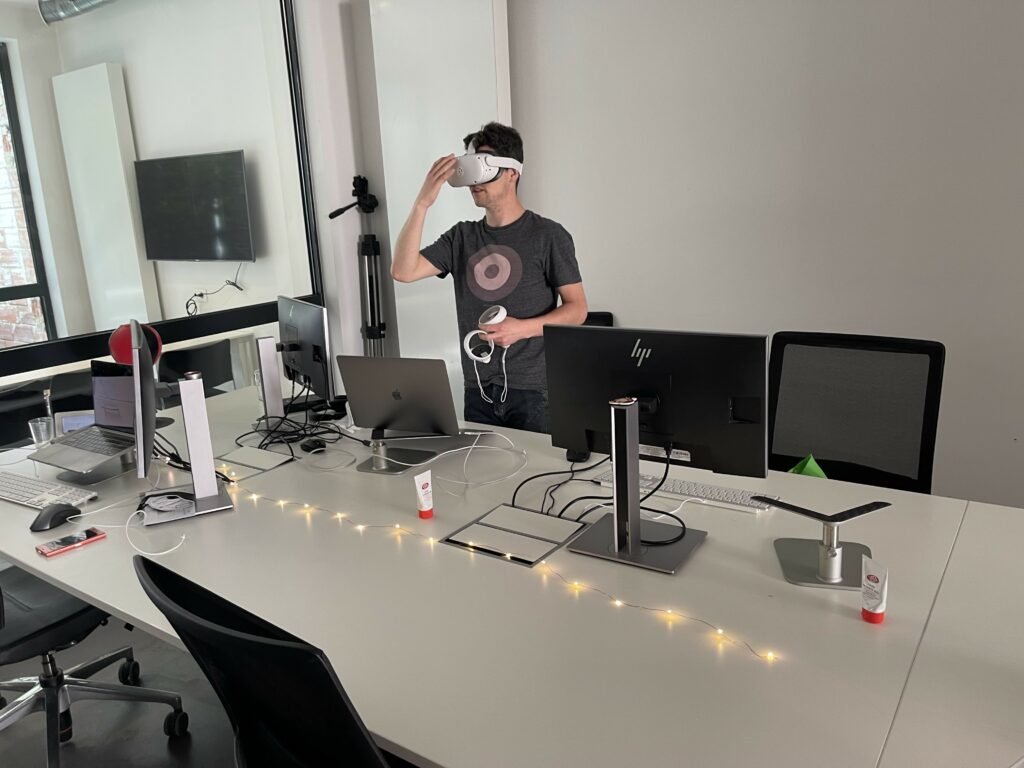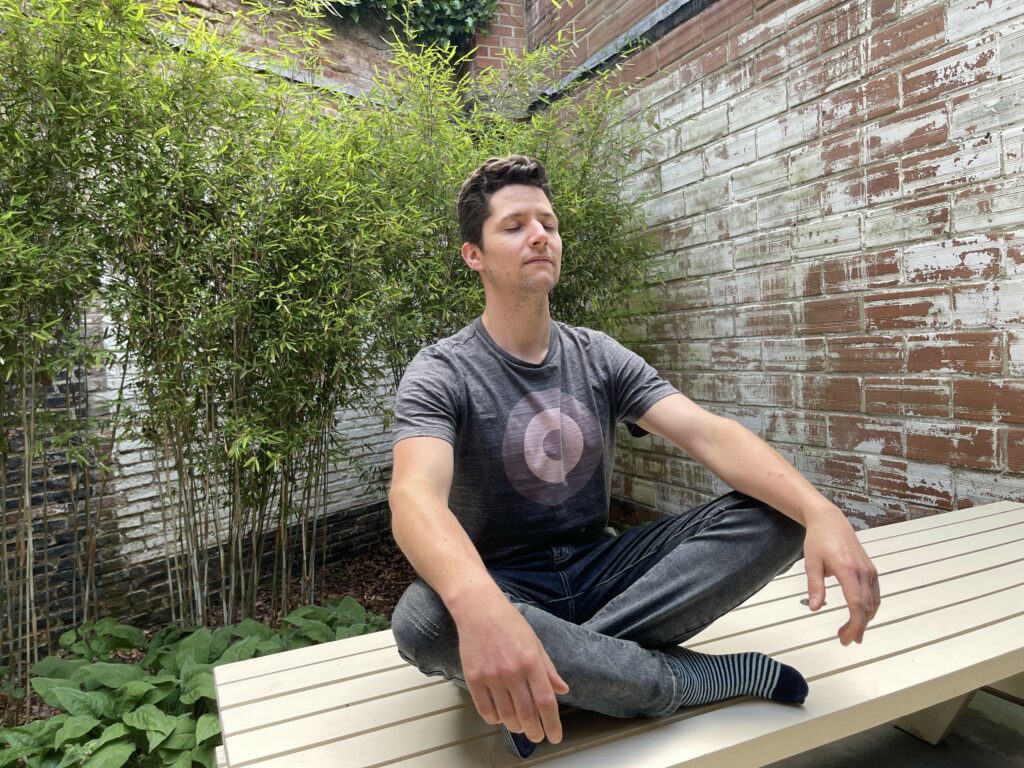It’s been a while since we introduced you to a member of the PreviewLabs team. It’s time to right that wrong and put the spotlight on one of our more international colleagues: Jerry van den Heuvel; Studio Manager for our team in Wetteren.
Q: Hi Jerry, let’s start this by addressing the elephant in the room right away: you’re a Dutchman, living in Belgium, working with a team that spans two continents. How did you end up here?
A: Well, I made the move to Belgium at the beginning of 2020, specifically to join the PreviewLabs team here in Wetteren. As I let my network on LinkedIn know that I was open for new opportunities, a recruiter from Amiqus reached out to me about a cool new opportunity here at PreviewLabs. He set me up for a call with Bernard and we hit it off right away.
“PreviewLabs is a very unique company. Not only because we have a team in Belgium and one in the US that work closely together, but also because we’re the only business of its kind.”
Q: We’re glad you made the move to our neck of the woods. What is it you do at PreviewLabs, exactly, and how have you been liking it so far?
A: I’m the Studio Manager for our Belgian office. Basically I’m responsible for the Belgian operations of PreviewLabs. I leverage my own background in game programming and running a game company to manage most of our projects, meet with clients, and make sure everyone here stays happy by managing their workload.
It’s been great working at PreviewLabs so far. I really had to adapt to the intercontinental team and the wacky time schedules that come with it, but working with the teams in Belgium and the US is a blast. There’s a lot to do with many smaller projects going on at the same time, which is great of course, but it also requires very good time management. That can be quite the challenge.
Q: Now that you’ve enlightened us about what you do, can you tell us more about how your passion for game development started?
A: As many game developers’ stories, mine starts with playing games – when I was really young actually, around 5 years old, when I had access to an Amiga, playing games together with my parents. Some of the games I played at the time included The Addams Family, Gods, Fury of the Furries, and Rick Dangerous. As you can see, most of my fondest early childhood memories are about playing games within the platformer genre.

Two of the games Jerry played in his childhood, Conker’s Bad Furday (on PlayStation 1) and Gods (on Amiga).
More than my parents, my grandmother was actually my greatest inspiration. She owned a range of game consoles – initially she was playing on the Commodore 64 and even ‘programming’ her own games by copying over source code from various magazines and sometimes fixing bugs in the source code.
Later we had a Nintendo 64 at home, while my grandmother had the PlayStation 1. My grandmother would play Resident Evil, while I’d sit in the couch and watch her play, hiding behind a pillow during the scariest parts of her zombie slaughtering adventures. One of my favorite game companies at that time was Rare, playing several of their platformer games including Banjo-Kazooie and Conker’s Bad Furday – the latter which referenced a lot of movie references such as The Matrix, A Clockwork Orange, etc. I must have been 16 by the time I played that game, near the end of the Nintendo 64 era.
“I was prototyping games as well as hardware when I was ten.”
Anyway, after I had been playing the first Rayman game on PlayStation 1 at my grandmother’s, it inspired me to draw platformer levels on pieces of paper and stick them on a cardboard box as if it was a computer monitor, while also cutting out an avatar and moving it over the levels. I really liked drawing, thinking about characters, and levels. I also had a cardboard keyboard and mouse attached to this ‘computer’ with a piece of twine. Now that I think of it, I was prototyping software as well as hardware when I was a small kid (laughs). I must have been around 9 or 10 years old at the time.
Q: Wow, that’s awesome. And It looks like you had a grandmother from the future! So as your game development passion started with drawing levels, how did it evolve more into programming, and then running your own game company?
A: My brother, who is 4 years older than me, was introduced to Macromedia Flash by some of his friends, and I saw him work with this. While I couldn’t program yet, I started playing around in Flash, making some animations and artwork. Then when my brother graduated from high school, he had an extra long holiday. We decided we’d work together on developing a game. I ended up drawing the artwork, while he was programming and integrating my art. It was a really amazing experience, spending this time working together with my brother like that. It was at that point that I knew I wanted to get into game development.
By the time I made it out of high school, the NHTV at Breda started offering game development [this school is now called the Breda University of Applied Sciences (BUAS), and their game development program is called ‘Creative Media and Game Technologies‘]. I was so happy to find out about this, and really wanted to go there. I wanted to be a game developer; to program, do artwork, and everything. However, in order to get accepted I needed to do a programming test – and I wasn’t fully aware that I needed to choose between artist or programmer. At that point, I made a rational decision between being an artist and being a programmer: While I like doing art the most, I decided to go for programming as it felt like this was the area where there was the most potential to learn. It also felt like it could lead to the best future, as programmers are always in high demand.
In Breda, they always expected the best of everyone. It was really hard, but I was determined, and ended up spending a lot of time learning this. Sometimes I would even skip sleeping for a night to be able to learn what I needed to learn.
We started with 150 students, of which about 60 programmers. Within the first year about half of those dropped out, as it was really hard and the environment was really competitive. For all the programmers that started, there were only two programmers that were able to obtain the degree of the four-year program within four years – myself and another guy.
Lab Horror is fortunately not a reference to PreviewLabs, but instead Jerry’s graduation project. There was even a paper, together with his professor Jacco Bikker, which got published in Motion and Games.
In Breda they taught me to aim for the best, be really competitive, and be a real game developer.
Q: Wow, that sounds like an army bootcamp kind of experience. PreviewLabs is not the first company you were intimately involved with. What was your previous experience?
Together with 3 other students from Breda, we decided to start two companies: one to do regular IT development (Global Design Mainframe) and one to do game development using some of the money earned during the other company’s projects (Gogo Games). In the end this strategy didn’t end up working as the work for Global Design Mainframe ended up taking over, and it turned out to be not possible to work on our own games based on this way of working. However, we still made a couple of game titles.
We would develop games with the same mentality as PreviewLabs: we know how to make games, we know the technology, we know about user experience, etc – so we can make better products than programmers who don’t have this experience.

During the strictest of lockdowns of the pandemic, Jerry resorted to VR to be less lonely in the office.
One of the first assignments we had was making an augmented reality application to allow showing products based on image markers – done in a very user friendly, stable, and top-notch way.
Q: Fortunately, life isn’t all work, even with crazy intercontinental schedules. What do you do to wind down after you shut down your work laptop?
Well, one of the most effective ways to disconnect from work for me is through the amazing power of meditation. It started when I discovered this guy Wim Hof. He’s also known as The Iceman, who has been able to withstand absurdly low temperatures. He was able to do this through meditation and some breathing techniques, which he captured in the Wim Hof Method. I’ve been following this for a couple of months now, and I’ve got to say, I am seeing improvements for myself. I even tend to take a cold shower every now and again.
Q: So, as a guy who traded his home country for a job here, why should someone looking for a job in the games industry apply for a position at PreviewLabs?
A: Working on prototypes offers a lot of variation. Because the projects are shorter and usually more innovative, we have this high speed sequence of interesting projects, which often also use cutting edge technologies, That’s a big difference compared to more traditional game studios, where the development of one game takes a very long time.
PreviewLabs is a very unique company. Not only because we have a team in Belgium and one in the US that work closely together, but also because we’re the only business of its kind. Sure, there are other game studios that also develop prototypes as a service, but we are the only one that is truly specializing in this. This means that everyone here is surrounded by a fun team that’s passionate about prototyping.
Interested in becoming a part of our team as well? Make sure to register for our jobs mailing list and indicate your interest level to receive an up-to-date message about our current hiring needs and to be among the first to know whenever a position opens up.


